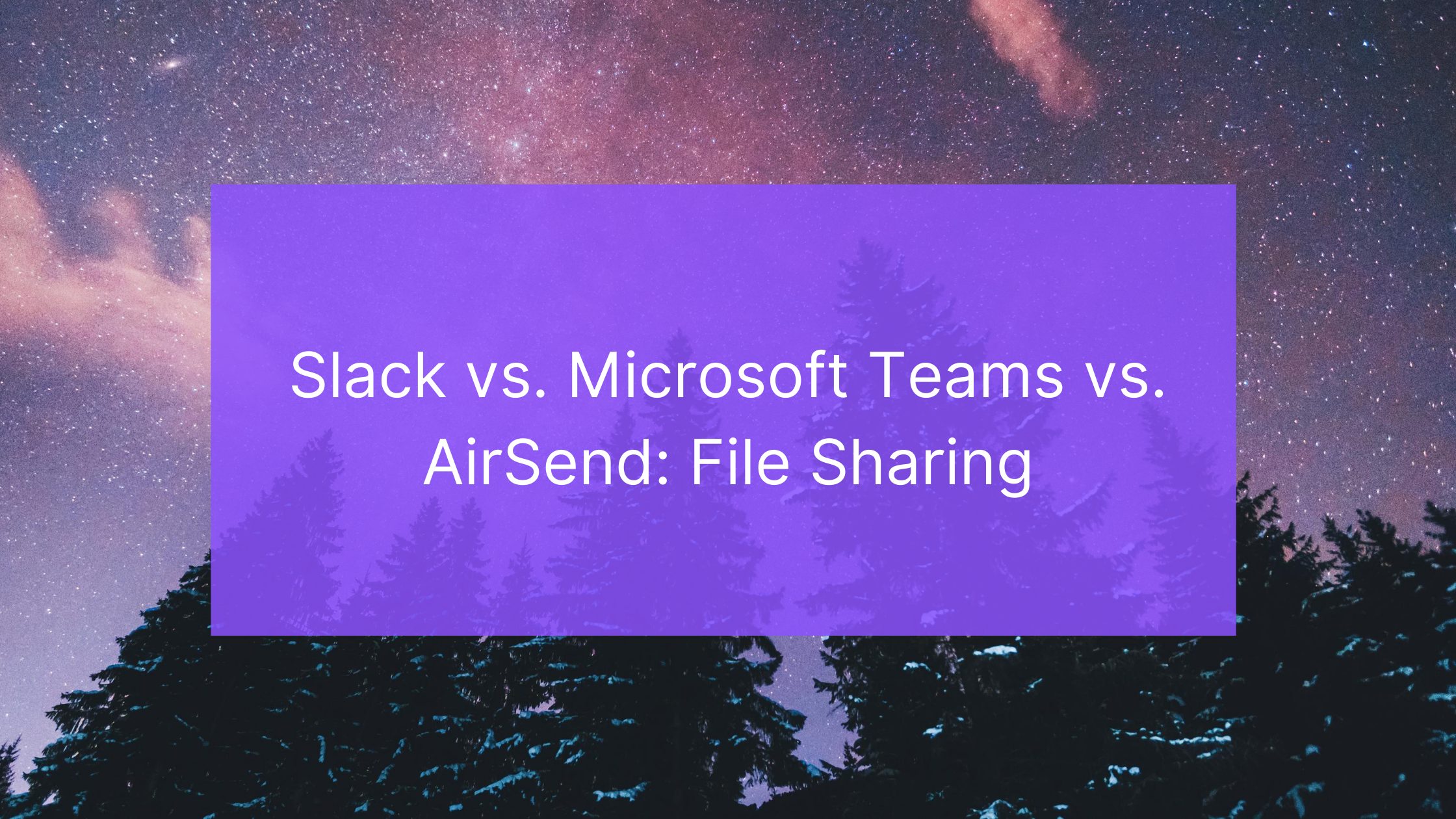
Slack vs. Microsoft Teams vs. AirSend: File Sharing
Most people underestimate the importance of file sharing. File sharing is one of the more vital essentials for improving workflow. File sharing allows for work to get done better and faster. Additionally, most work happens on a digital platform, such as Slack, Microsoft Teams, and AirSend. With work happening on a digital platform comes a necessity for convenience. A basic form of convenience in today’s digitized workforce is file sharing. This blog post will discuss and compare file sharing between the three most popular workflow platforms- Slack, Microsoft Teams, and AirSend.
Let’s start with Slack.
Slack File Sharing

I’m sure, as you already know, Slack is a basic communication tool that is the king of integration. However, I am not talking about the fantastic integrations the platform has. I am talking about file sharing. As stated in the paragraph above, file sharing improves workflow. How does it improve the workflow? Well, it’s simple. Sending files on a digital platform means instant transactions- transactions referring to sending and receiving files, and communicating with the sender. Being able to receive files instantly makes the progress of work faster. Faster equals efficiency. Efficiency is the best friend of business. However, as much as I could go on about how vital file sharing is, it is essential to discuss some of the file-sharing limitations- file storage and file size. Every platform has its limits. With Slack, it is file sharing.
- Free Plan: 10 GB file storage per person
- Plus Plan: 20 GB file storage per person
- Enterprise: 1 TB file storage per person
Slack’s file-sharing plans are pretty simple to understand. Microsoft Teams on-the-other-hand has some complexities.
Microsoft Teams File Sharing

For some, Microsoft Teams can be too complex to use. With a busy UI design, some people can even feel intimidated to use the platform. However, there are some remarkable things about Teams as well, like file sharing. If you don’t know already, Teams seamlessly integrates with OneDrive and Office 365. Like Google Drive, OneDrive is a file hosting and synchronization service operated by Microsoft. So, one can imagine what when using Teams, storing and sharing files with OneDrive is incredible. However, the excellent platform comes at a high price. Let’s take a look at Microsoft Teams' file-sharing plans.
Microsoft Teams file attachments in chat:
- Free: 2 GB per user
- Basic: store and share files up to 1 TB per user
- Business Standard: 1 TB per user
- Enterprise: unlimited
Microsoft Teams file sharing within teams:
- Free: 10 GB across teams
- Basic: 1 TB per organization plus 10 GB per license
- Business Standard: 1 TB per organization plus 10 GB per license
- Enterprise: 1 TB per organization plus 10 GB per license
Microsoft Teams personal file storage and sharing with OneDrive:
- Free: none
- Basic: 1 TB per user
- Business Standard: 1 TB per user
- Enterprise: unlimited
As you can see, there are several options when it comes to file sharing and file storage. Further, according to their pricing page, there is zero personal file storage, which can hinder those on the free plan. If you are looking for some alternatives to Microsoft Teams, check out our blog post, “ 7 Best Alternatives to Microsoft Teams.” Finally, it is time to talk about our favorite platform’s file-sharing- AirSend.
AirSend File Sharing

AirSend is a simple communication tool. With built-in task management, audio and video calling, notebook, Office 365 integration, and file storage, businesses can get work done better and faster. We also like to keep things simple. We show our admiration for simplicity through AirSend. With a clean and organized design, it is super easy to organize/share files and folders. Here are the plans AirSend has to offer:
- Free: 15 GB file storage, 30 MB file size
- Pro- Unlimited file size, 100 GB file storage (sign up before September 15th to get AirSend Pro free for one year)
- Business- 1 TB plus 50 GB per additional user file storage, unlimited file size limit
Summary
File sharing improves workflow. The question that remains is which platform can offer you the best file sharing solution. With Slack, many limitations aren't around file sharing. Microsoft Teams is incredible with its file-sharing capabilities; however, the cost is incredibly steep. AirSend is a simple platform that offers Office 365 integration and flexible file-sharing/storage.

By Team FileCloud